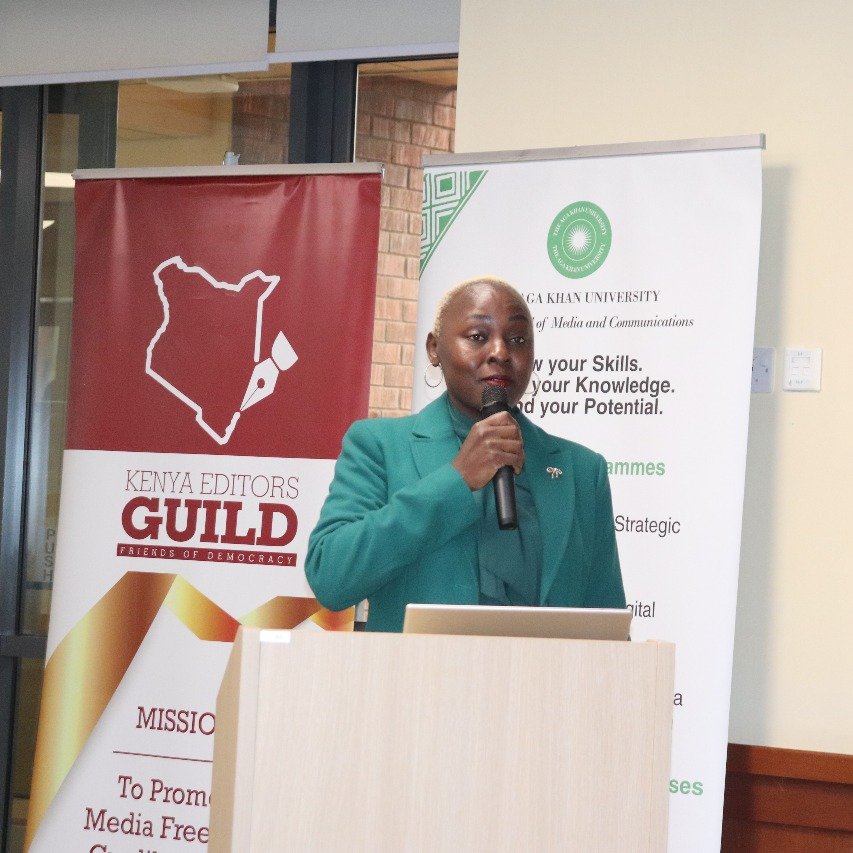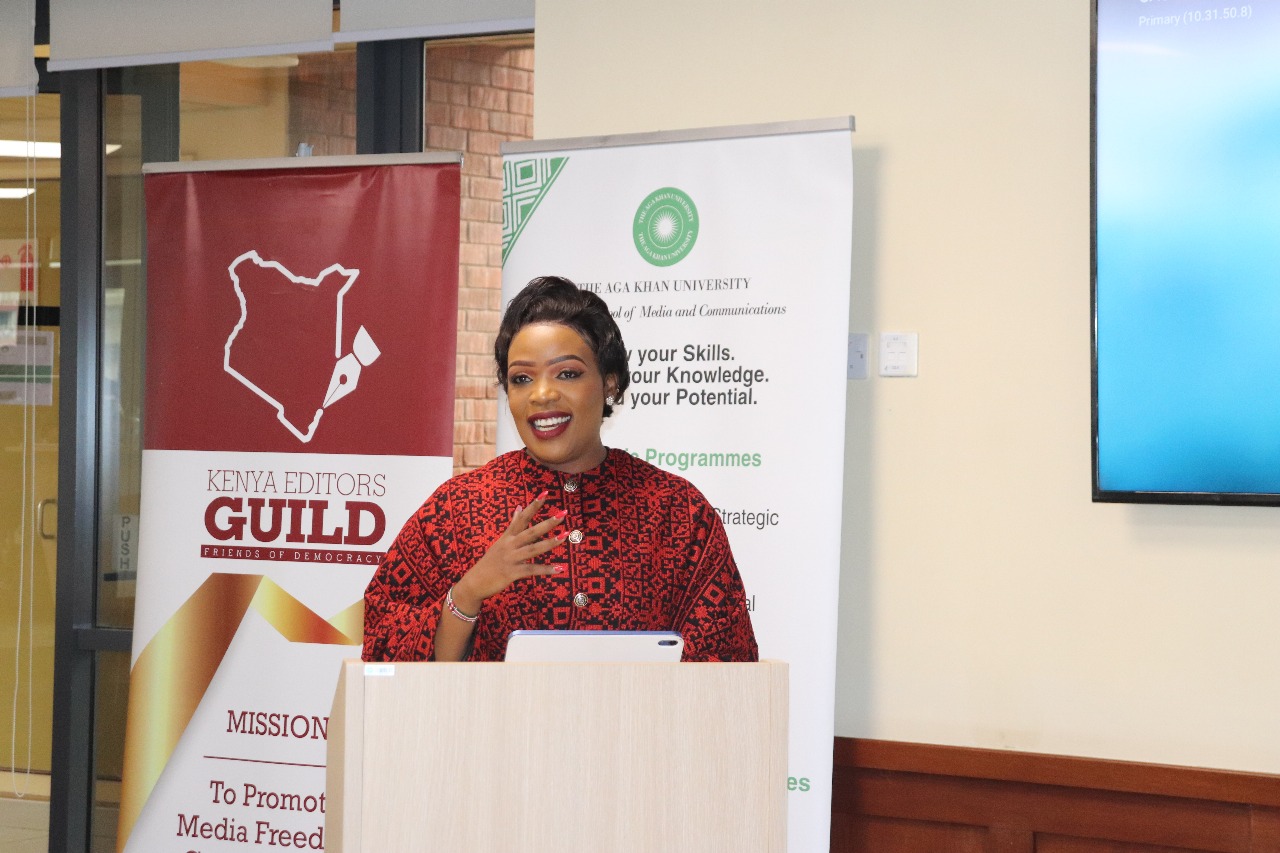KEG President Zubeidah Kananu speaking at Aga Khan University on Sexual Harassment in the Media.
By Peace Muthoka.
NAIROBI, Kenya,August 19, 2025 – Kenya’s media leaders, journalists, and human rights advocates gathered at the Aga Khan University today, vowing to transform newsrooms from epicenters of fear into safe havens. The urgent half-day dialogue, “Sexual Harassment in the Media – Dialogue & Action,” confronted a chilling reality: a staggering 79 percent of female journalists in Kenya have experienced sexual harassment.
The statistic, first revealed in 2021, remains the highest reported in Africa and set a grave tone for the discussions. The crisis runs even deeper. A 2023 report by the Association of Media Women in Kenya (AMWIK) found that interns and young journalists aged 18 to 35 are the most vulnerable, with 60 percent reporting harassment.
Alarmingly, 69 percent of these young professionals were unaware of their own media houses’ policies, and most remain silenced by fear and guilt. Compounding the problem, the report uncovered entrenched victim-blaming, with half of the male respondents blaming harassment on women’s behavior or dressing.

Speaking at the forum, AMWIK Executive Director Queenter Mbori acknowledged the grim statistics but also pointed to progress. She noted that a modern sexual harassment policy developed by stakeholders has already been adopted by about ten media houses. “We have many organisations that have adopted a modern sexual harassment policy that was developed,” she said, adding that an audit is underway to check their effectiveness.
Moving beyond policy, experts emphasized the need for a fundamental cultural shift. Dr. Lydia Radoli, a Senior Lecturer in Media & Film Studies at Daystar University, stressed, “It’s one thing to have a policy, another to follow it. Policies only work when lived.” She recommended practical measures like quarterly comprehension tests and anonymous surveys.
Echoing this need for comprehensive change, Dr. Radoli and Julius Bosire, a Senior Lecturer from TUK, shattered the stereotype that only women are victims, urging for gender-inclusive support systems and training.
This call for accountability was directed squarely at leadership to end the widespread culture of impunity. Recent surveys show that 70 percent of journalists know at least one perpetrator who faced no consequences, often simply moving to another newsroom.
KEG President Zubeidah Kananu issued a powerful mandate, declaring, “To every survivor: Your story matters. Your career matters. You deserve justice, not just ‘policy’… Newsrooms must be safe before the story breaks.”
The consensus was clear: true change requires both robust systems and a transformed heart. The Kenyan media industry is now on notice, tasked with building a new culture of professional kinship and unwavering zero tolerance.










